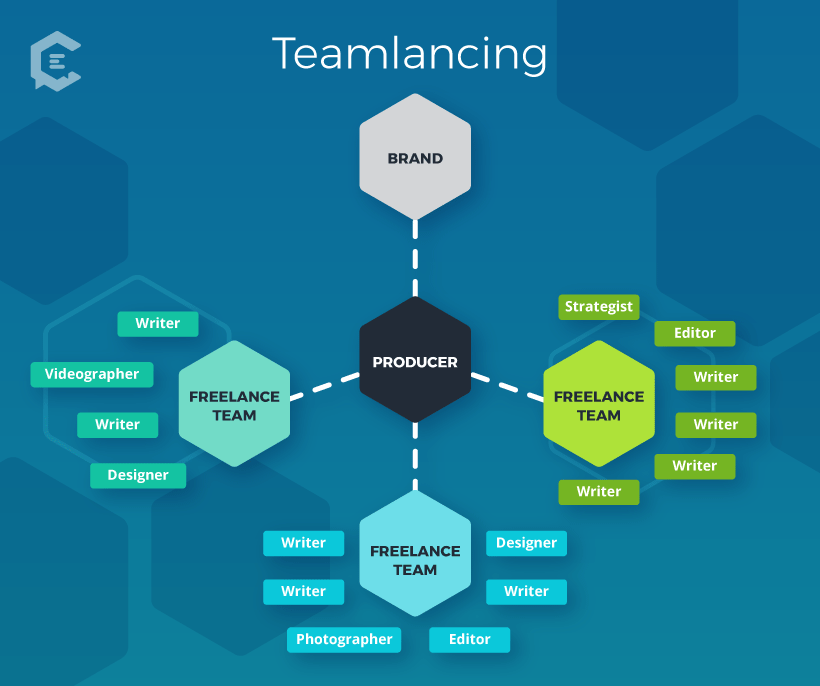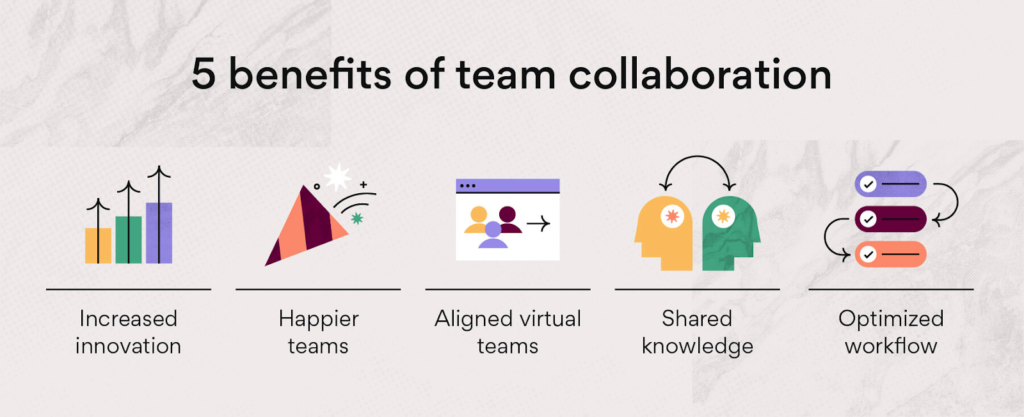Is Teamlancing the New Alternative for Freelancers?

In today’s ever-changing and rapidly growing digital world, self-employment is no longer a trend, but rather a widely accepted norm. It is one of the most favored job options over traditional, nine-to-five employment. Freelancing is no longer just a pipe dream; it is becoming one of the most sought-after professional paths. As the stigma associated with freelancing is fading, the number of competitors in the industry is skyrocketing. People are no longer hesitant to accept the role of an independent contractor and have chosen to become full-time, long-term freelancers. Naturally, many alternatives for freelancers have risen too.

According to a 2019 survey conducted by Upwork and Freelancers Union, it is estimated that around 57 million Americans freelance, with 53% of those surveyed being between the ages of 18 and 22. And remember, this was three years before the COVID-19 pandemic. Consider that there are roughly 6,73,000 people freelancing online and only approximately 6600 available freelancing jobs. Despite the fact that there are many more freelancers on a worldwide scale, this scenario shows the huge estimations of freelancers in comparison to the job requests. Talk about competition.
COVID-19 has not only inspired more people to seek out new alternatives, but it has also made freelancing more appealing. These two years were not only a season of loss but also of unexpected discoveries and better alternatives, as more and more talented experts shifted to freelancing.
Former General Electric CEO Jack Welch once said, “buy or bury the competition.” For years, freelancers believed that burying the competition was the only option. It might have worked back then, but as competition has increased, it has become common knowledge that if you can’t beat them, you must join them. Isn’t it much better to get the opponent on your side and win the game together? So, let’s define teamlancing and what it means to you as a freelancer.
What Is Teamlancing?
Teamlancing is a growing phenomenon of freelancers cooperating together to form a team. It is the alliance of a band of freelancers working toward a common goal, such as creating products or delivering services for clients. As you may expect, it has the same management structure and positions as that of a corporation. Making a documentary, for example, may necessitate the services of a cameraman, a host, a writer, and an editor to ensure that the end result is as close to ideal as possible. In such instances, a freelance producer may act as a manager and the client’s point of contact. This freelance producer will then operate as primary contact for a team of freelancers with the required expertise for the project.

Teamlancing also helps freelancers in executing the project more swiftly, with higher quality, and with greater efficiency. Each freelancer brings a unique set of abilities that can significantly contribute to the project. Each team member will then have defined targets to complete, and as a result, the work can become faster and more efficient, allowing the team to accept volumes of freelance work and earn more clients easily.
What Does Teamlancing Mean for Freelancers?
With the introduction of teamlancing, interacting with freelancers from all over the world to confront obstacles as well as reap the rewards has become plausible. Teamlancing could be an opportunity for you to augment your expertise. Simultaneously, it becomes easier to market yourself without paying additional time and cost.

Many freelancers, while being spread across the globe, build relationships and bonds with one another in order to continue working together and build communities of support. Even if you’re an introvert who finds it difficult to communicate with others, developing new relationships is essential for gaining access to more rewarding jobs.
It is critical to evaluate the various professional possibilities that may be reached by working with freelancing teams and using a team mindset as your guiding principle.
Over time, your social connections with other freelancers, whether individually or as part of a team, will help you grow.
What Does Teamlancing Mean for Marketers?
Not only would teamlancing benefit freelancers, but it would also profit the clientele. Teamlancing may help brands increase their creative resources, allowing them to create content more quickly, without the added hassle and cost of employing or facilitating staff for project-based or short-term tasks.
Instead of forming an in-house team for short-term projects, organizations can gain considerably more by hiring a workforce with maximum operational flexibility, self-management, and task-specific employees. While full-time creative teams can take months to build, teamlancing can provide access to the same level of skill in days, if not minutes, with no long-term risks or cost. Moreover, rather than hiring individual freelancers and managing each one individually, the new teamlancing model relies on freelancers who collaborate and self-manage projects in the same way that an in-house team would, making it that much more sustainable.
What Are the Benefits of Teamlancing?
Even if you prefer working alone, you can’t deny that it’s simply more convenient to work in groups. Although, if you’re still planning on working on your own, it’s better to reach out to other freelancers and organize your own freelance group. Above all, view every opportunity to collaborate as a learning experience rather than a waste of time. You will gain so much more that way. Here are some of the benefits of teamlancing for freelancers.
- It assists freelancers in securing a considerably larger amount of work with old customers and brands, as well as networking with new prospects.
- It helps in broadening the freelancers’ network to prospective clients in order to increase business and revenue probabilities.
- Teamlancing allows freelancers to form better bonds with other freelancers, giving them more room to grow and learn from one another.
- When you have stronger relationships and closer ties to other freelancers, it is easier to stay up to date about the market.
- It also helps minimize the likelihood of payment troubles by enlisting the cooperation of fellow freelancers and colleagues when client conflict arises.
Here are some benefits of teamlancing for brands:
- Brands can put together teams with specialized talents for certain projects at a lesser cost and with fewer management troubles.
- Hiring self-governing teams rather than supervising individual contributors also allow the brand to focus on other vital activities at hand.
- Teamlancing also allows you to adapt to business demands more quickly and with greater flexibility. This happens by providing access to global talent and improving content quality through collective team knowledge and cooperation.
- It also allows the company to experiment and innovate more proactively, and further gain more creative knowledge from teams from around the world.
- Brands can choose to collaborate with a specialized team of freelancers who are enthusiastic about understanding and expressing their brand voice in accordance with company standards.
Can Teamlancing be an Alternative for Freelancers?
Freelancing is being your own boss, and it may be a fantastic way to earn a living on your own terms. Teamlancing is only one of the most recent evolutions in the world of freelancing. It is a great way to get experience and improve professionally in the shortest period of time. It can prove to be exponentially beneficial in the long run.
Some may see teamlancing as a big step, while others may be wary of working with complete strangers due to the trust and risks involved. Others may even avoid forming a team because they sought autonomy in the first place. Isn’t it true, however, that freelancing carries some level of risk? It is critical to recognize that networking and communication with other freelancers has become one of the most important paths to success in today’s world, even for introverts.
Previously, freelance was thought to be a solo concept of marketing, designing, developing, or writing services; however, with a team, it is possible to assign roles and focus on one aspect of the business, while allowing others to contribute to another. Evidently, it has a slew of benefits that outweigh the risks.

Instead of working in solitude and monotony, teamlancing promotes more professionalism, higher-quality work, and greater accountability. There may not be a clear answer to whether teamlancing is a good alternative for freelancers, as this decision solely depends on the organization and various individuals involved.
When teamlancing with an unknown freelance group, there is some level of risk, since it is new. Plus, even if the team does not function well together, you are contractually obligated to complete the assignment. However, with the right perspective, even the most unpleasant situations may be turned into learning opportunities. So, do you think teamlancing is your next big move toward upscaling?
FAQs
Teamlancing is when a bunch of freelancers gets together to work on a specific project for a client.
There are numerous types of freelance jobs available, and more businesses are hiring freelancers than ever before. To help with requests, the digital world has a multitude of freelance websites that list assignments. ClearVoice, Upwork, Freelancer, and Fiverr are just a handful of the websites where freelancers can identify suitable work.
By choosing teamlancing, brands need to be in touch with just one person, who oversees the entire team. This way, they can focus on more important tasks. This impacts the business’ bottom line in the long run.
Latest Blogs
Explore how Google’s 2025 AI search updates triggered ranking chaos. Learn actionable strategies to adapt your SEO for AI Overviews, zero-click searches, and SERP volatility. Stay ahead now.
Learn how to rank on AI search engines like ChatGPT, Perplexity, and Gemini by optimizing your content for authority, structure, and relevance. Stay ahead in AI-driven search with this strategic guide.
Explore the best healthcare SEO services for your medical practice. Improve online visibility and effectively reach more patients in need of your services.
Get your hands on the latest news!
Similar Posts

Freelancing 101
5 mins read
11 Resources For Designers to Find Freelance Jobs Online

Freelancing 101
6 mins read
30 Freelance Industry Statistics to Get You Started

Freelancing 101
5 mins read